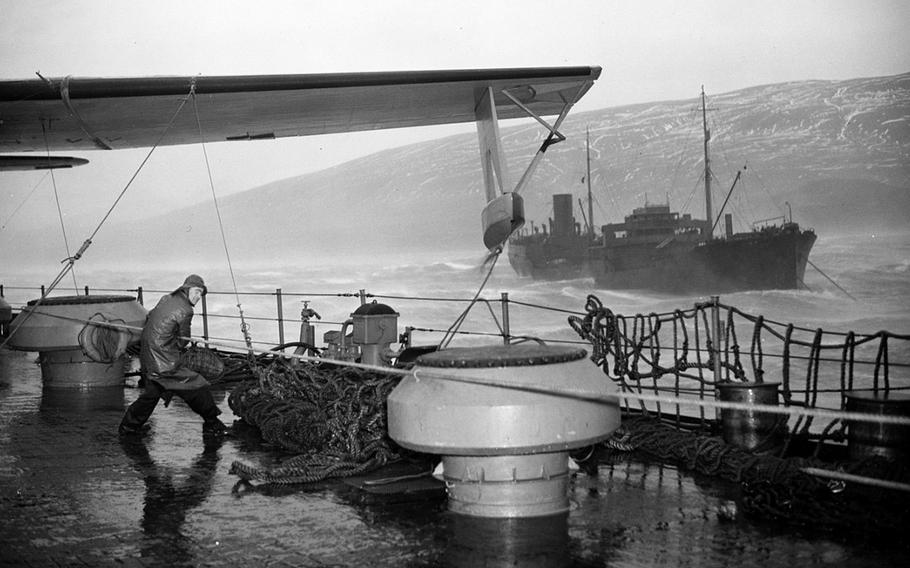
The crew of a seaplane tender struggles to secure seaplanes during a storm off the coast of Hvalfjordur, Iceland, in 1941. (Naval History and Heritage Command)
The U.S. Navy’s Pacific Fleet did more than help win World War II: As its ships made their way through the Pacific Ocean during the war, naval personnel used daily logbooks to record vital weather and climate data at a time when such observations dwindled worldwide.
Now, researchers and citizen-scientists have “rescued” over 630,000 records from the era, many from ships that were bombed in Pearl Harbor and that saw action in the Pacific theater during the war.
In a study published in Geoscience Data Journal, researchers tell the story of how the records entered the scientific record after seven decades.
Scientists have long sought more data and weather observations from the World War II era, which coincided with a curious blip in climate known as the “World War II warm anomaly.” During that time, the existing sea-surface temperature logs recorded higher-than-expected temperatures. Climate scientists think this might be because of shifts in collection methods during the war and because, instead of taking their weather observations at night, as was usual at the time, maritime observers often recorded temperatures during the day so they could avoid the dangers of enemy ships or detection during the night.
The data for the period also reflects big gaps in observations, both because trade ships mostly stopped sailing during the war and because naval records remained classified in the decades that followed.
In 2017, a major new data set became available when the United States declassified nearly 200,000 pages of U.S. Navy Command files dating between 1941 and 1946. The observations in the set were produced on ships based in Pearl Harbor, Hawaii, and whose crews fought and worked in the Pacific - “taking observations at times and in places where few or no other digitized observations exist,” the researchers write.
It would have taken decades for researchers to transcribe observations from the documents, so researchers teamed up with 4,050 volunteer transcribers in a National Oceanic and Atmospheric Administration-funded citizen-science project. More than 13 million keystrokes and a year later, their work resulted in a mammoth data set including more than 3.7 million previously unavailable observations.
Now, scientists can get to work correcting and better understanding the climate record. Their work will be possible thanks to not just the volunteers but also the Navy men who made the observations decades ago, Praveen Teleti, a research scientist at the University of Reading in the United Kingdom who led the research, said in a news release.
“The greatest respect must go to the brave servicemen who recorded this data,” Teleti said. “War was all around them, but they still did their jobs with such professionalism. It is thanks to their dedication and determination that we have these observations 80 years on.”